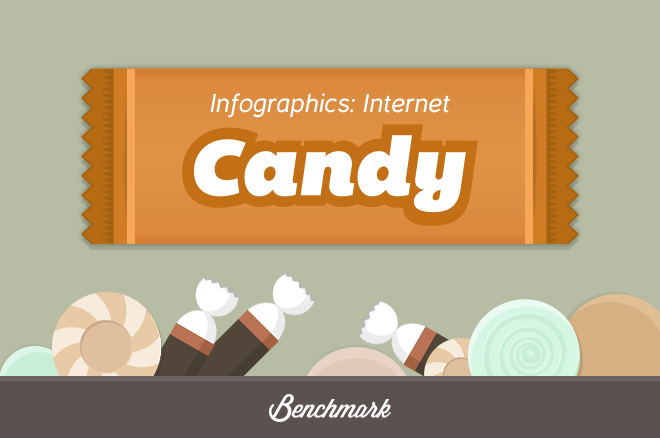
If you’re wondering why your infographics are failing, consider the top 8 must-have elements for each infographic. Remember that an infographic isn’t just about whipping out an illustration for your data, it’s about two things: (1) showcasing data and (2) marketing your visualized content, which means having an infographic content strategy. Use this guide as a checklist for your next infographic project.
Tailored Typography
An infographic isn’t about data overload. It’s about simplifying the information so it’s easily consumed. This is a basic fact but often overlooked because of the idea that ‘more is better.” In fact, studies show that infographics with larger fonts get about 38.5% more tweets and 54% more likes. On that note, keep your font pairings complimentary – which means no more than two (or maximum of three) types of fonts. Regarding color palettes, keep it to a simple 3-4 color scheme. If you’re emphasizing branding, then create infographics across similar palette schemes each time.
A Zero-Tolerance Policy Towards Charts and Graphics
Charts and graphs still need to be read and digested. They also burden the idea that you can just glance at an infographic and understand the message. Ditch the charts and graphs in favor of illustrations. The only real exception here is a pie chart that might be used to show a very minimal figure under 5%.
An Understanding of Natural Eye Movements
People scan information vertically, and do better with scanning narrow columns. This is why newspapers and magazines tend to be written in vertically-favored columns; it’s easier for people to consume the info. When designing your infograph, opt a vertical design versus a horizontal one.
Headers and Sub-Headers
Offer natural breaks in your data design by including headers and sub-headers. If you look at the template tools that help you design your own infographics, you’ll notice they all include headers and sub-headers. Offering readers a natural break lets them more easily scan your illustration for key data points.
Your Logo
Never forget to add your logo in the bottom bar, either on the left or right hand side. Including your logo is a discreet way to redirect readers to the source and help link credit to or recognize your company’s authority on the subject matter.
An Embed Code
Offering viewers an embed code helps recirculate your infographic. This is different than just saving and attaching a photo, which can cause your detailed image to lose resolution. Creating an embed code however, allows original resolution integrity and can even help you track how many people are sharing your infographic directly on their page.
A Marketing Strategy
However you chose to use your next infographic, know that you should also take a minute to submit them to series of infographic-friendly directories, listed here:
https://www.infographicsarchive.com/submit-infographics/
https://submitinfographics.com/
https://infographicsite.com/submit-infographic/
https://visual.ly
https://reddit.com/r/infographics/
https://www.nerdgraph.com/submit-infographic/
https://www.infographiclove.com
If you have some extra time on your hands, you can use a search feature on Twitter to see who has recently tweeted your topic. Once you have a good sample of account holders, send them a direct message asking if they’re tweet your infographic to followers. It’s a little extra work, but sending a direct message is a proactive step in getting your infographic digital traction.
An Understanding of Future Trends
Anyone who thinks a good enough infographic is about what was, isn’t paying attention. There are hundreds of infographics about data and facts, but not that many that can cut through the data to show value. Moving beyond that, there also aren’t a lot of infographics out there that can forecast for their industry or provide real-time data (especially in larger more complex climates). This is the real future of content visualizations, and understanding it means you can be ahead of the next data bubble.



